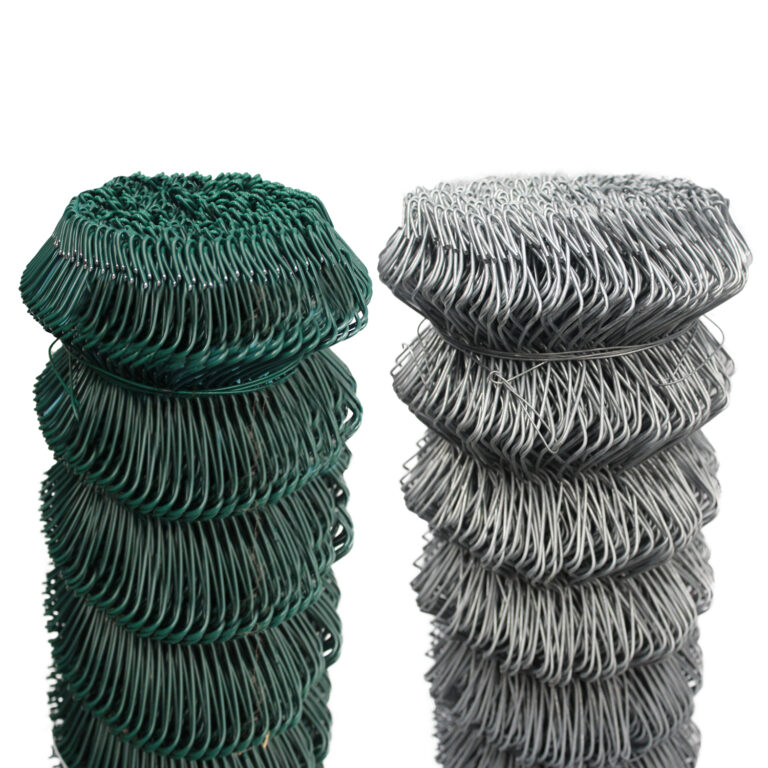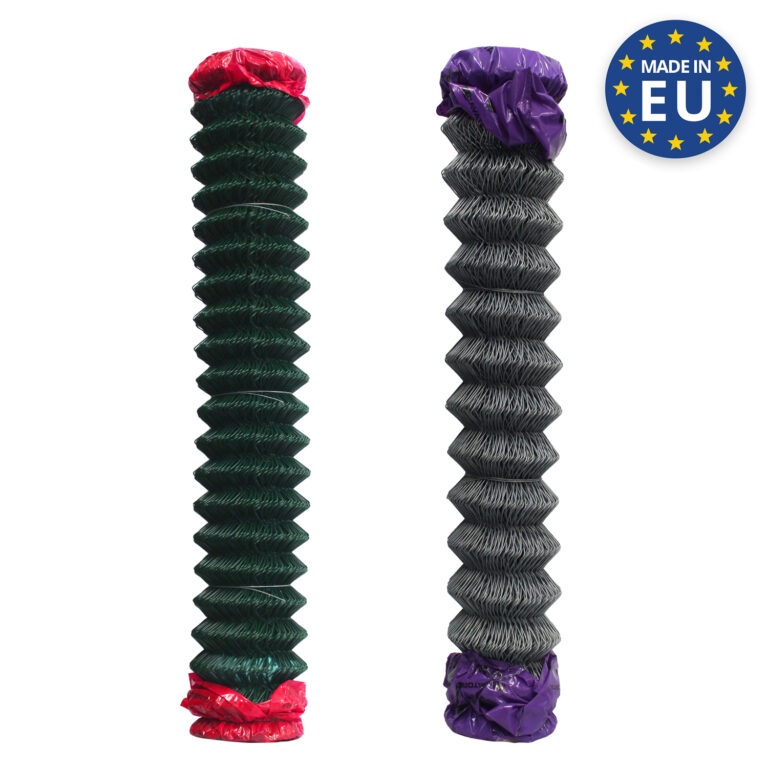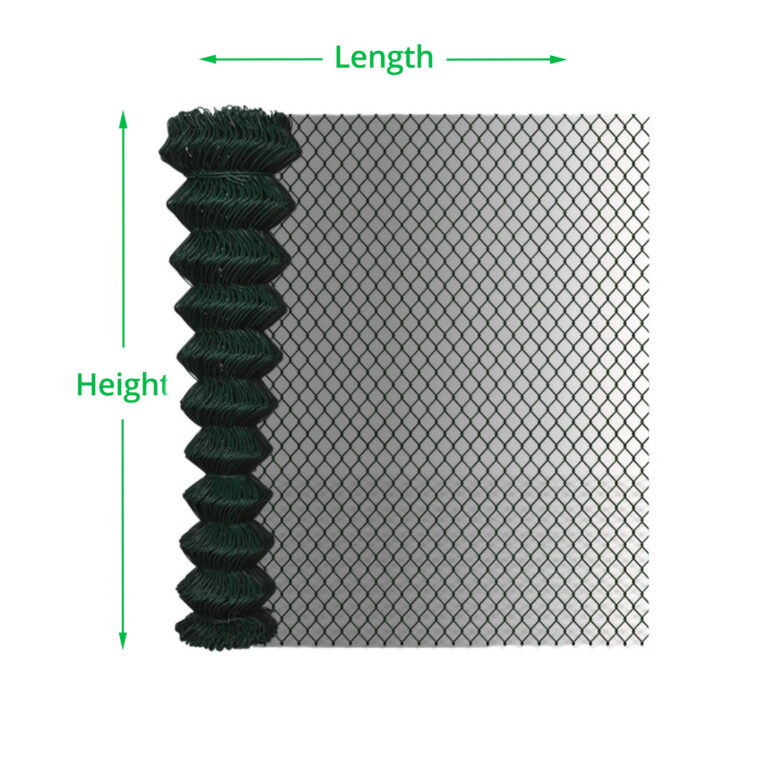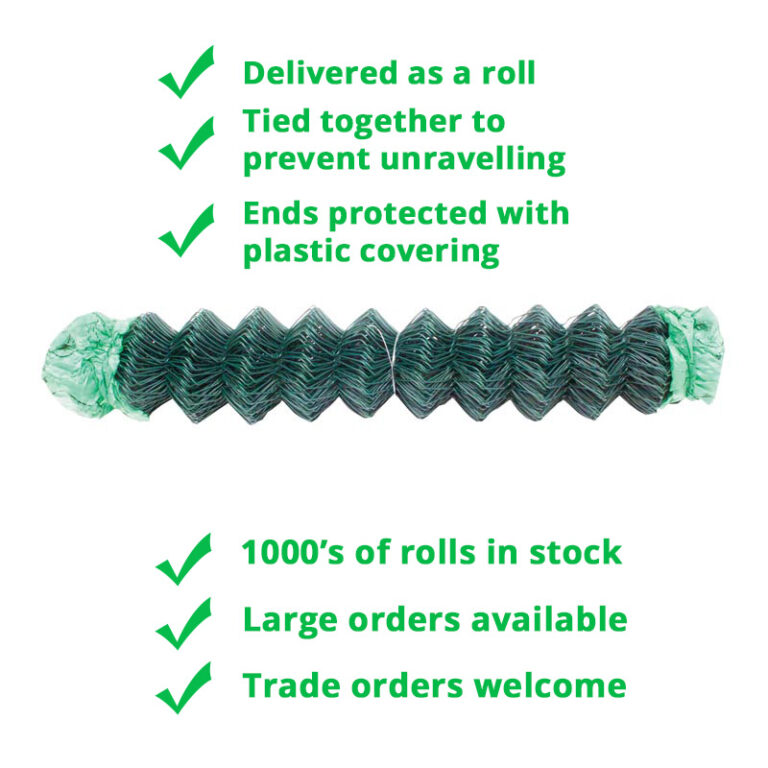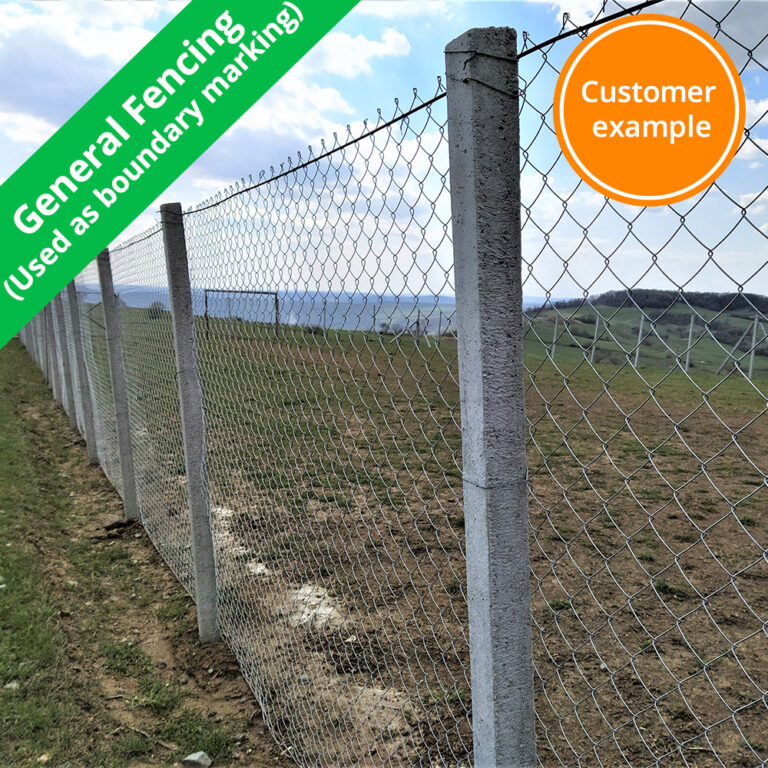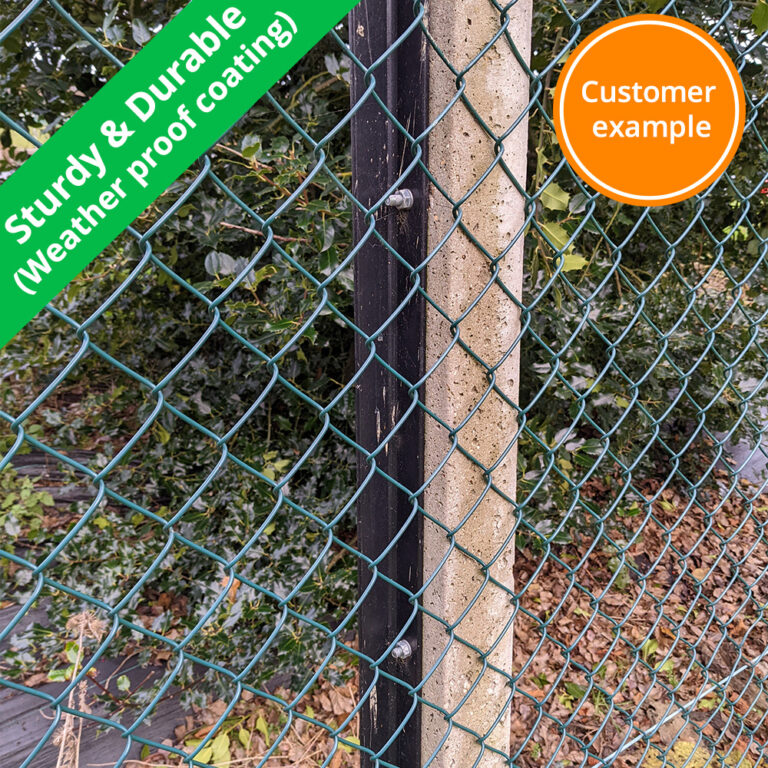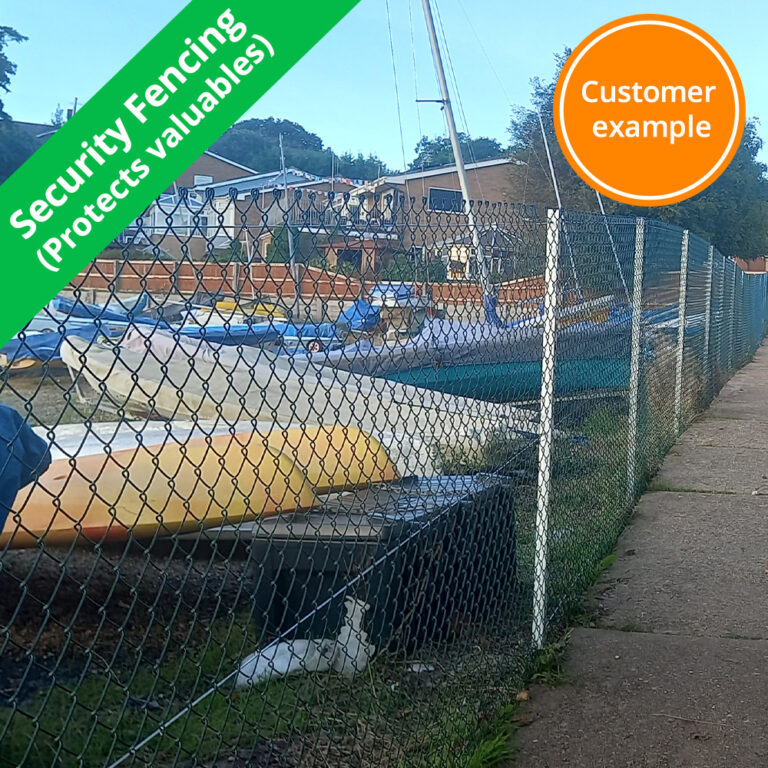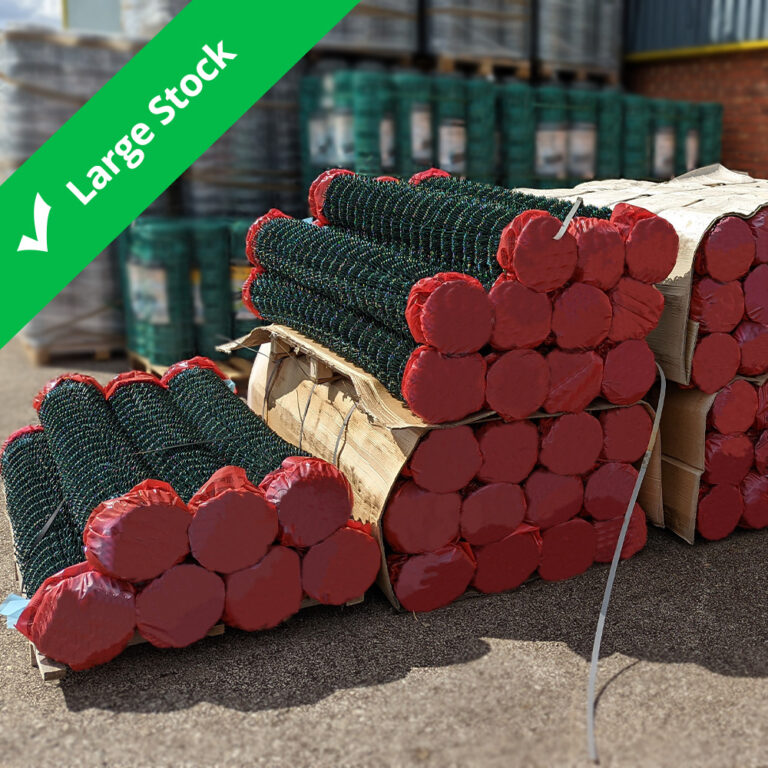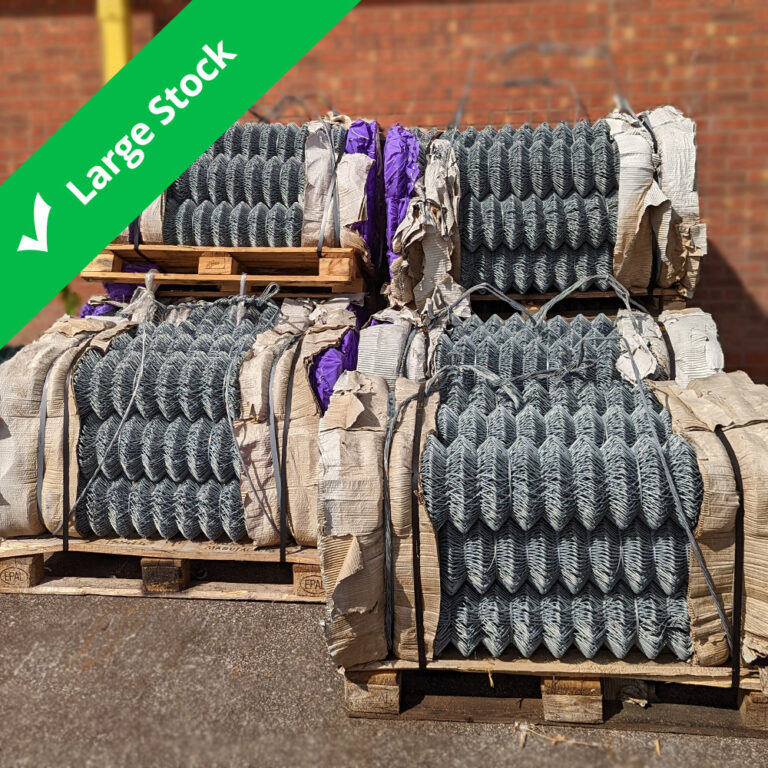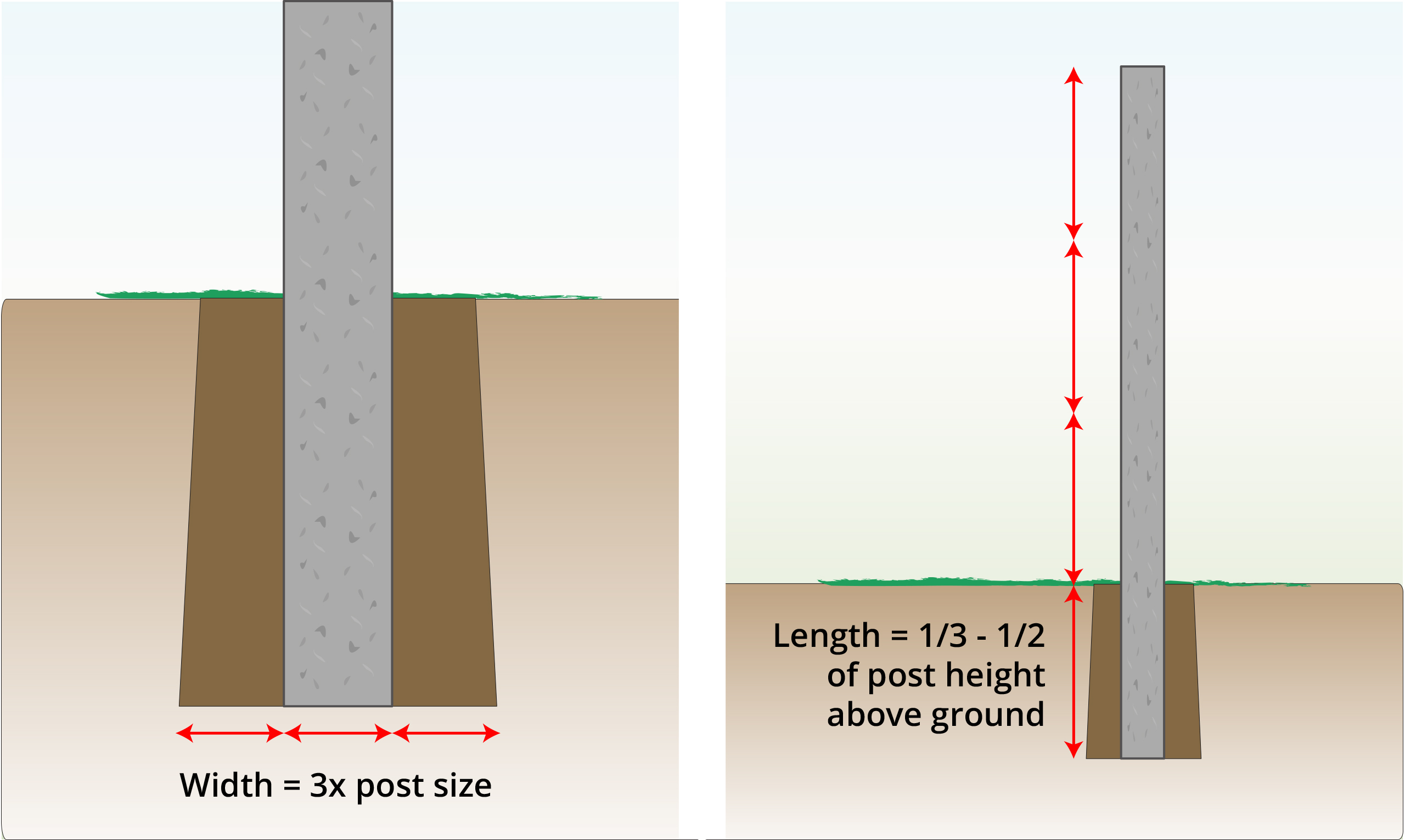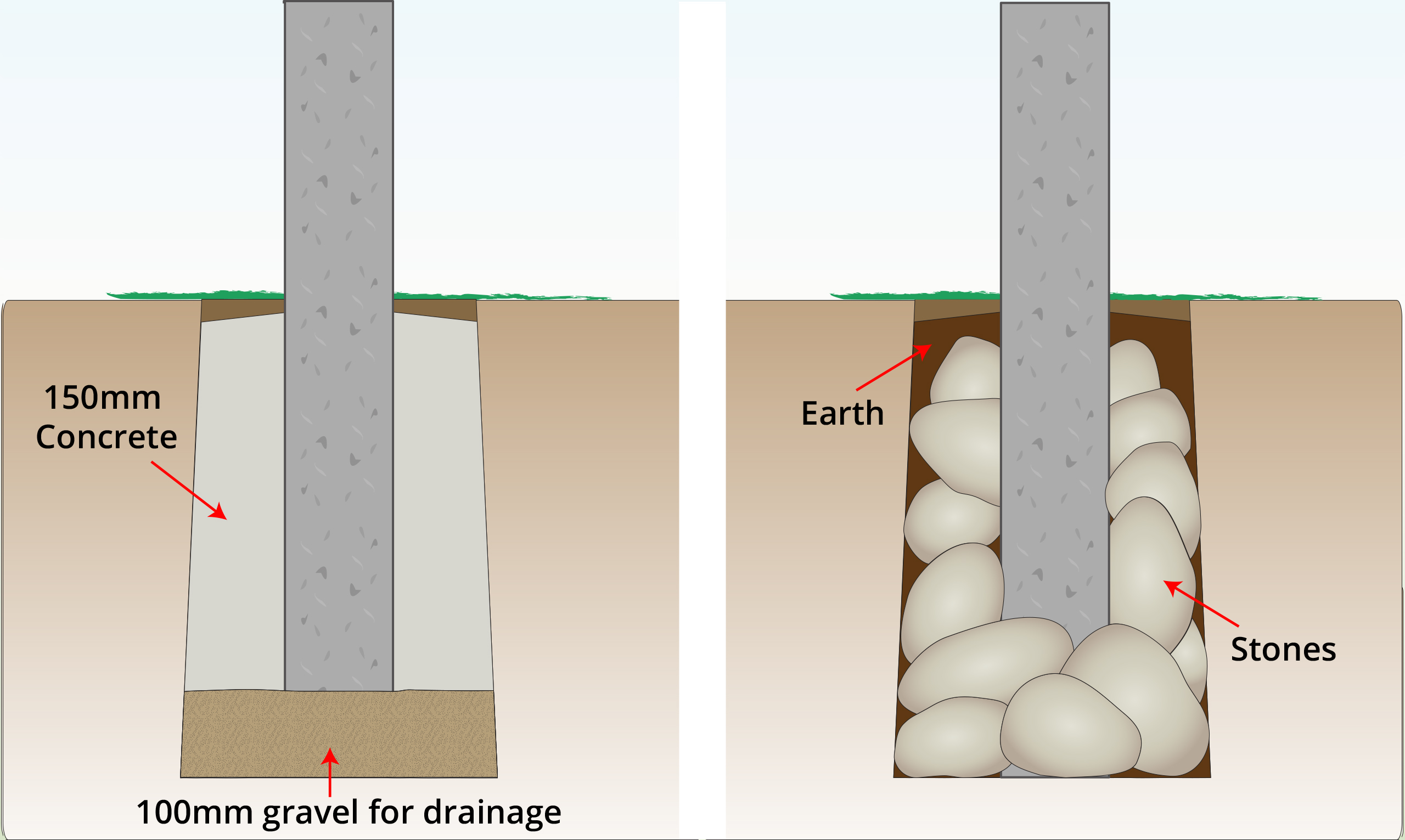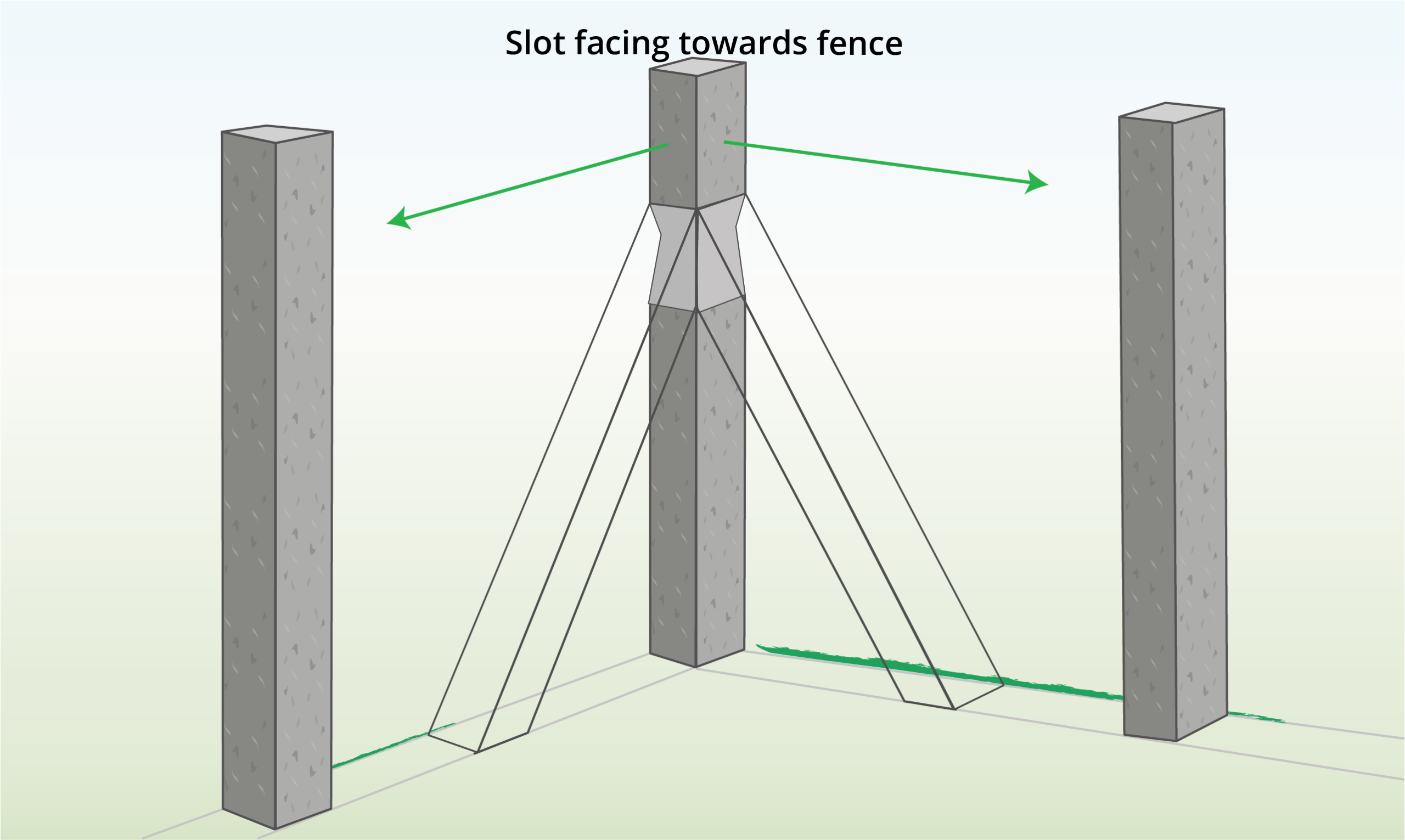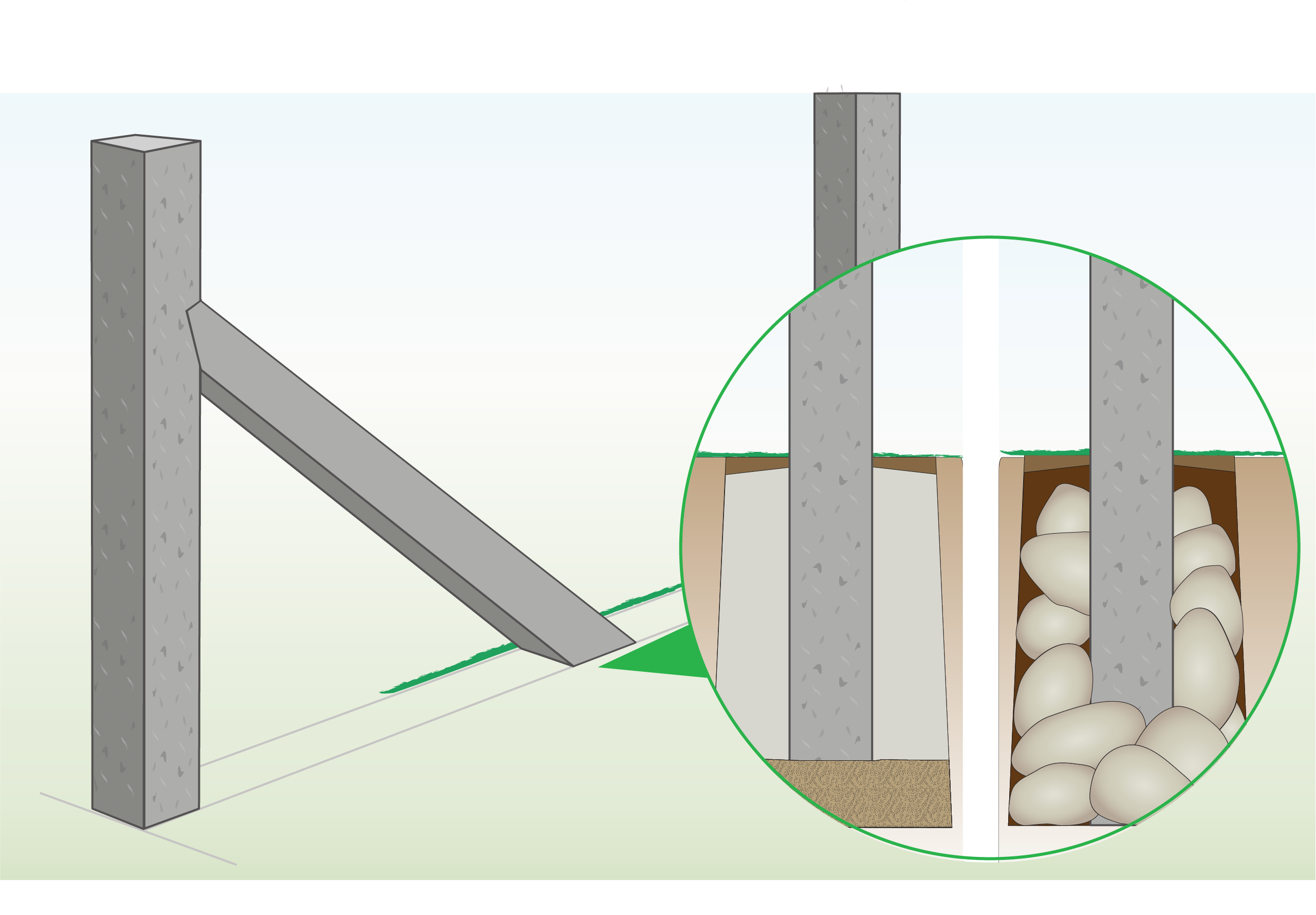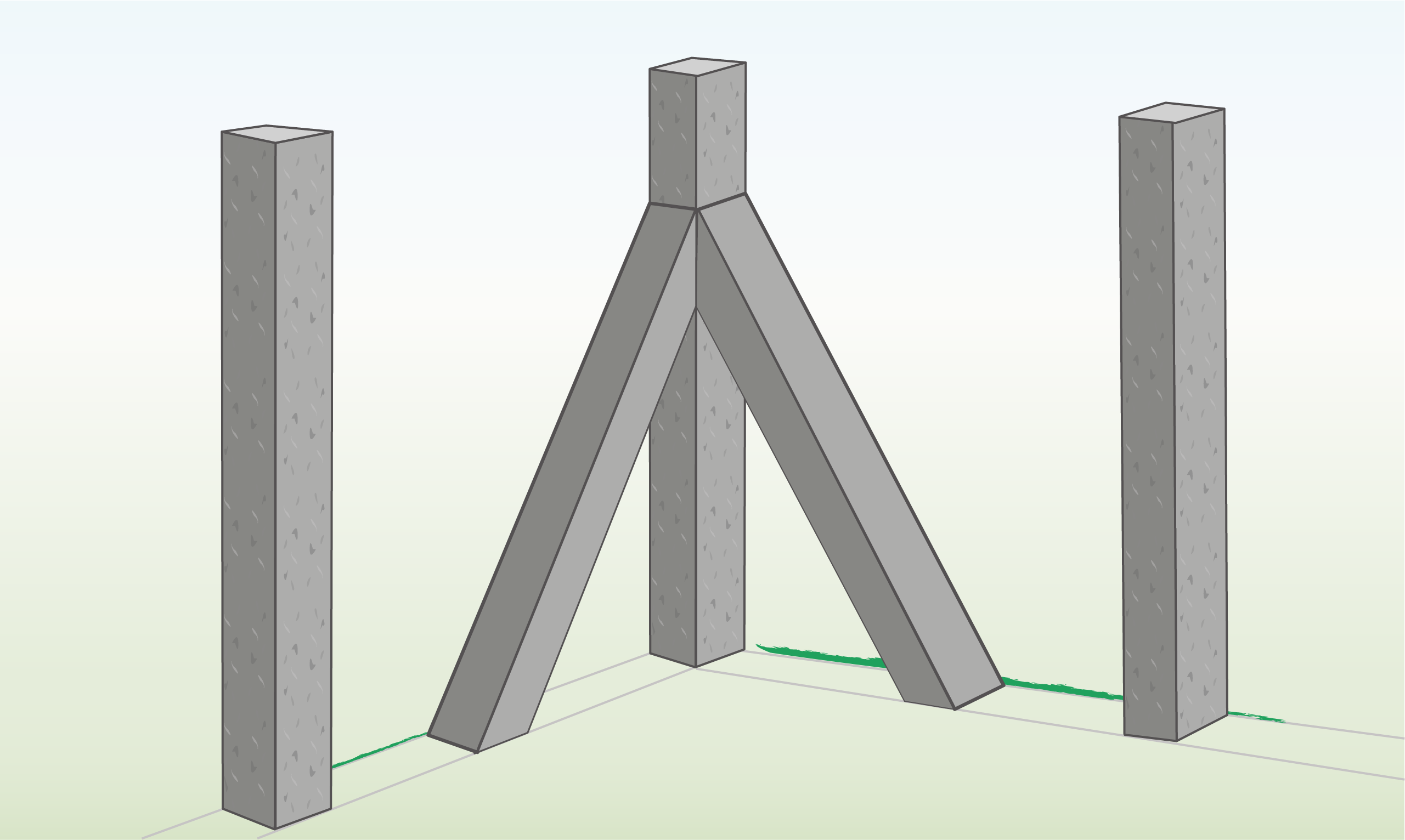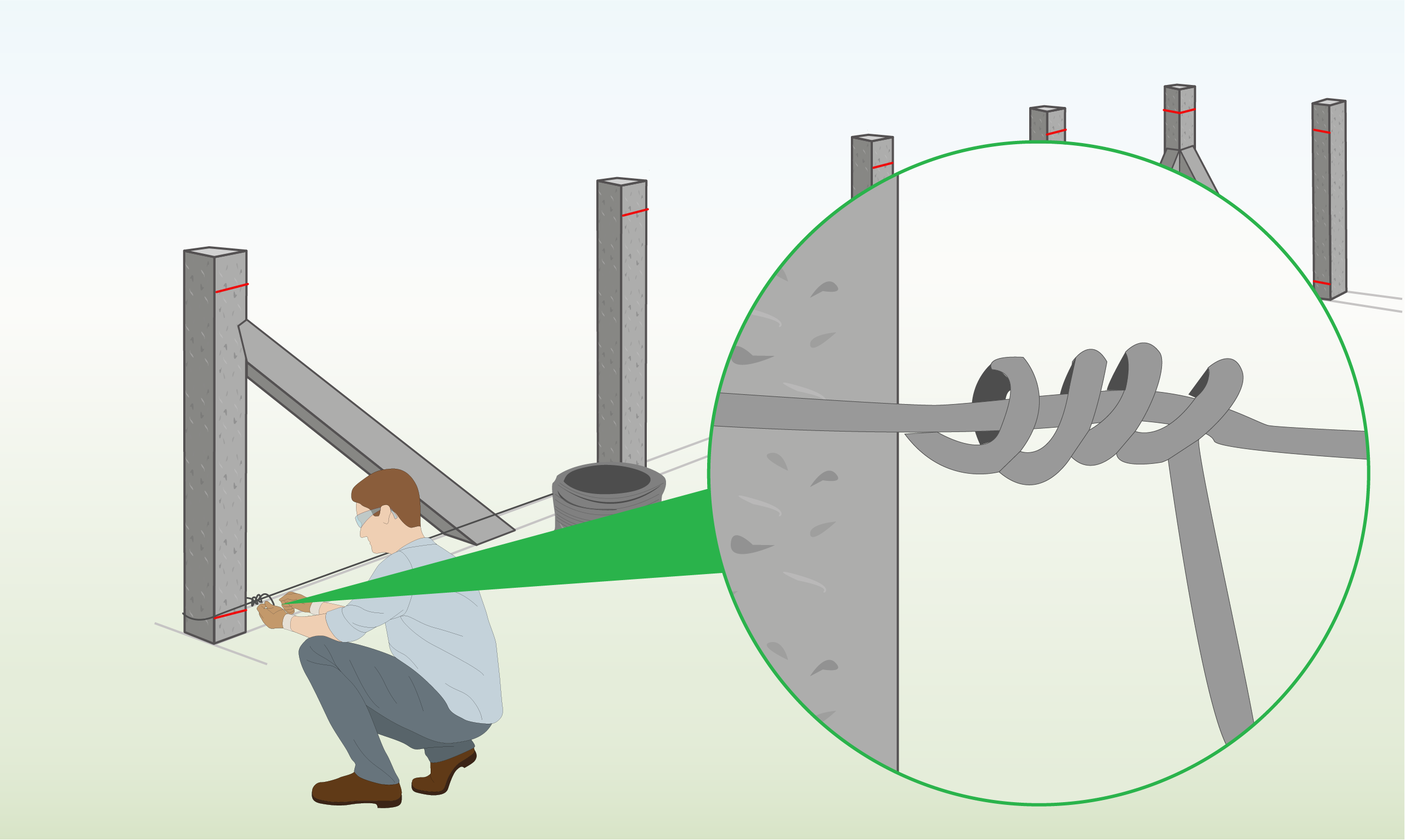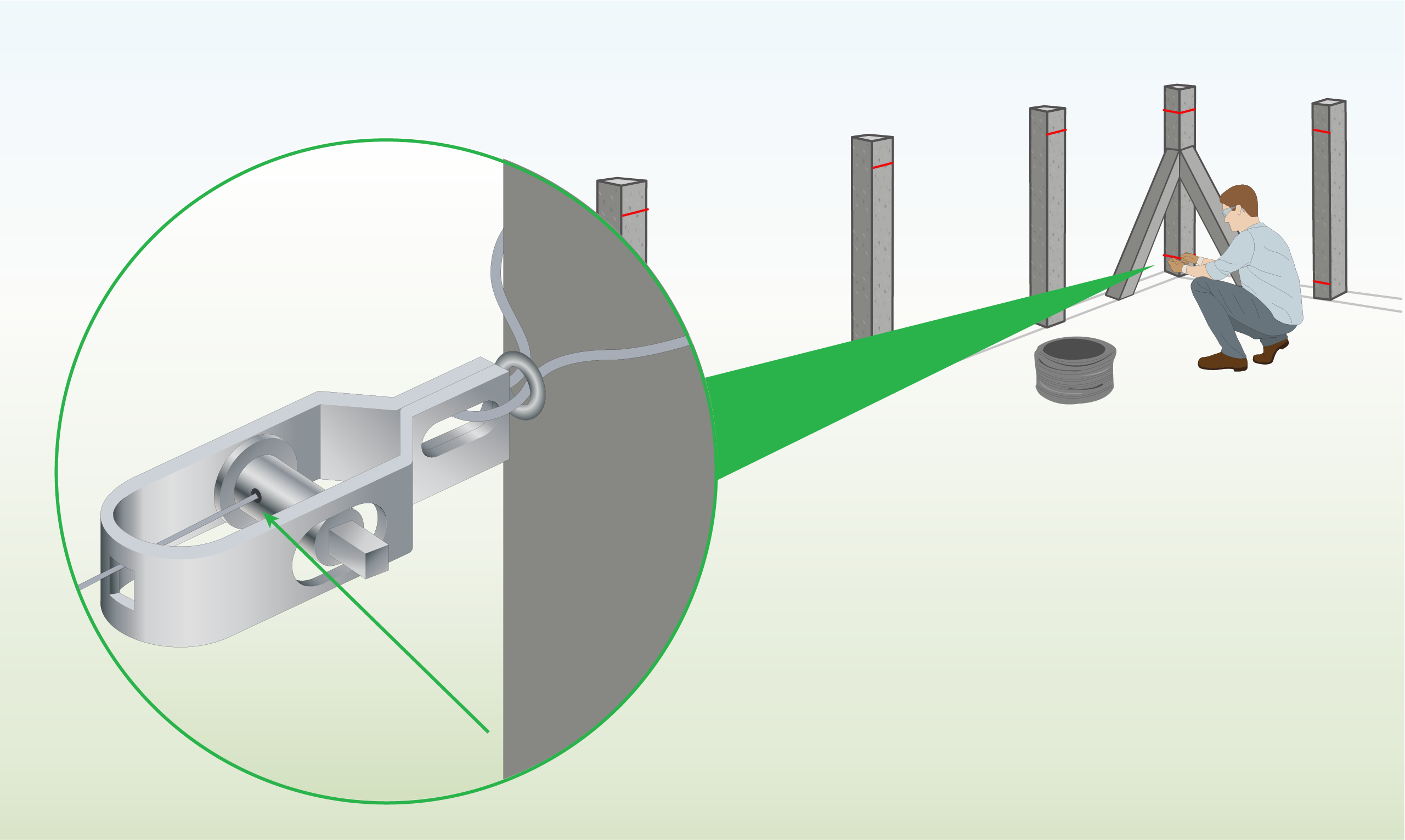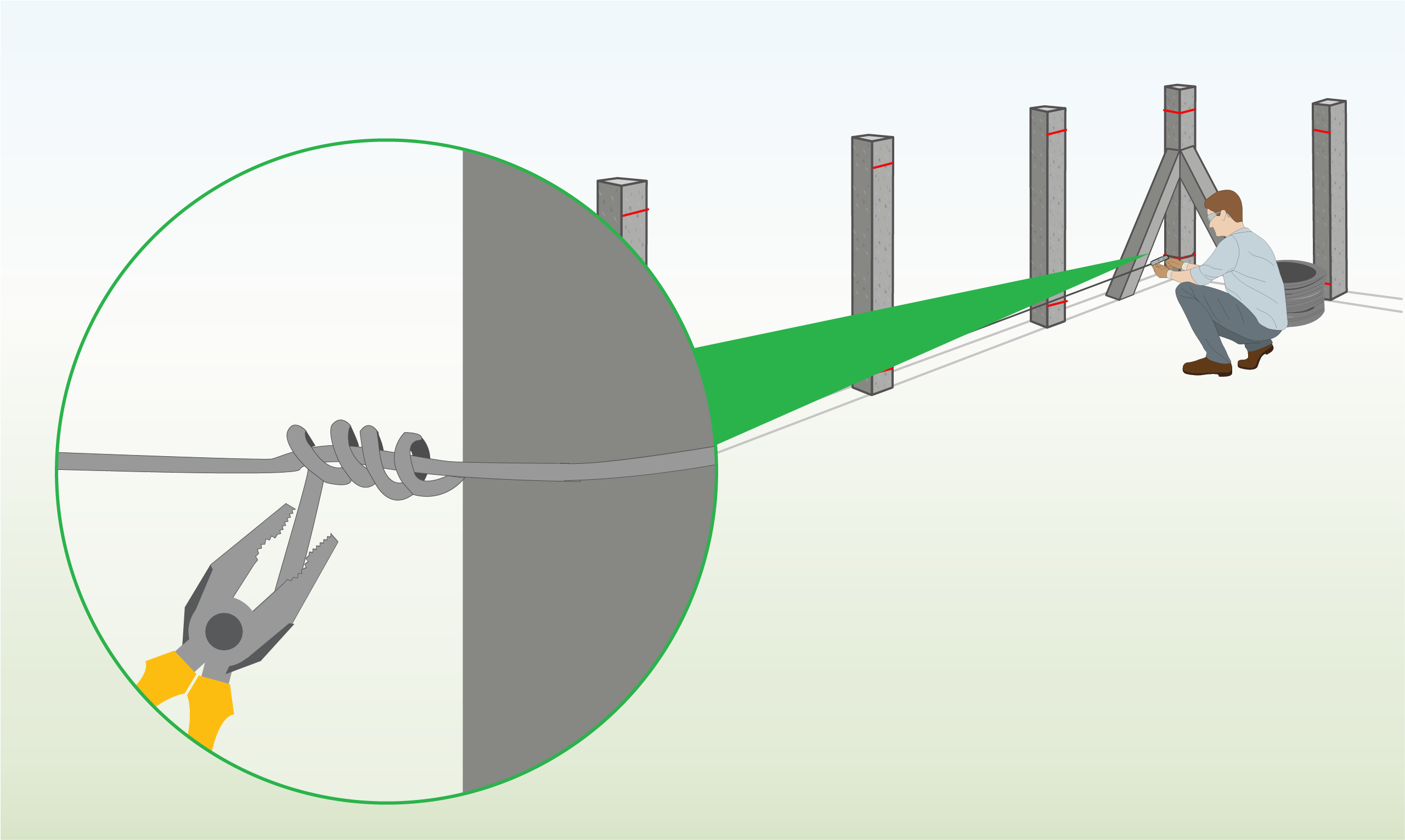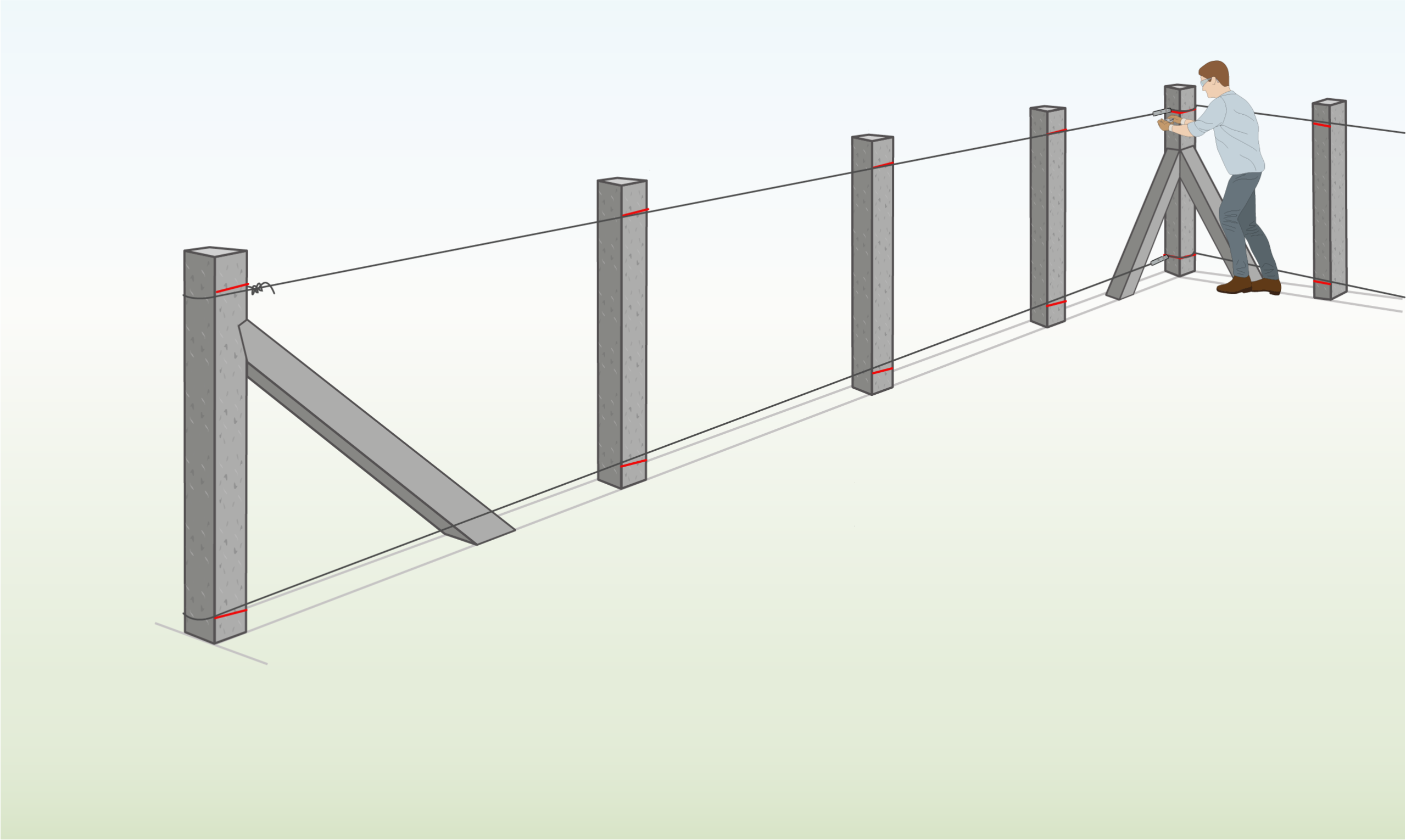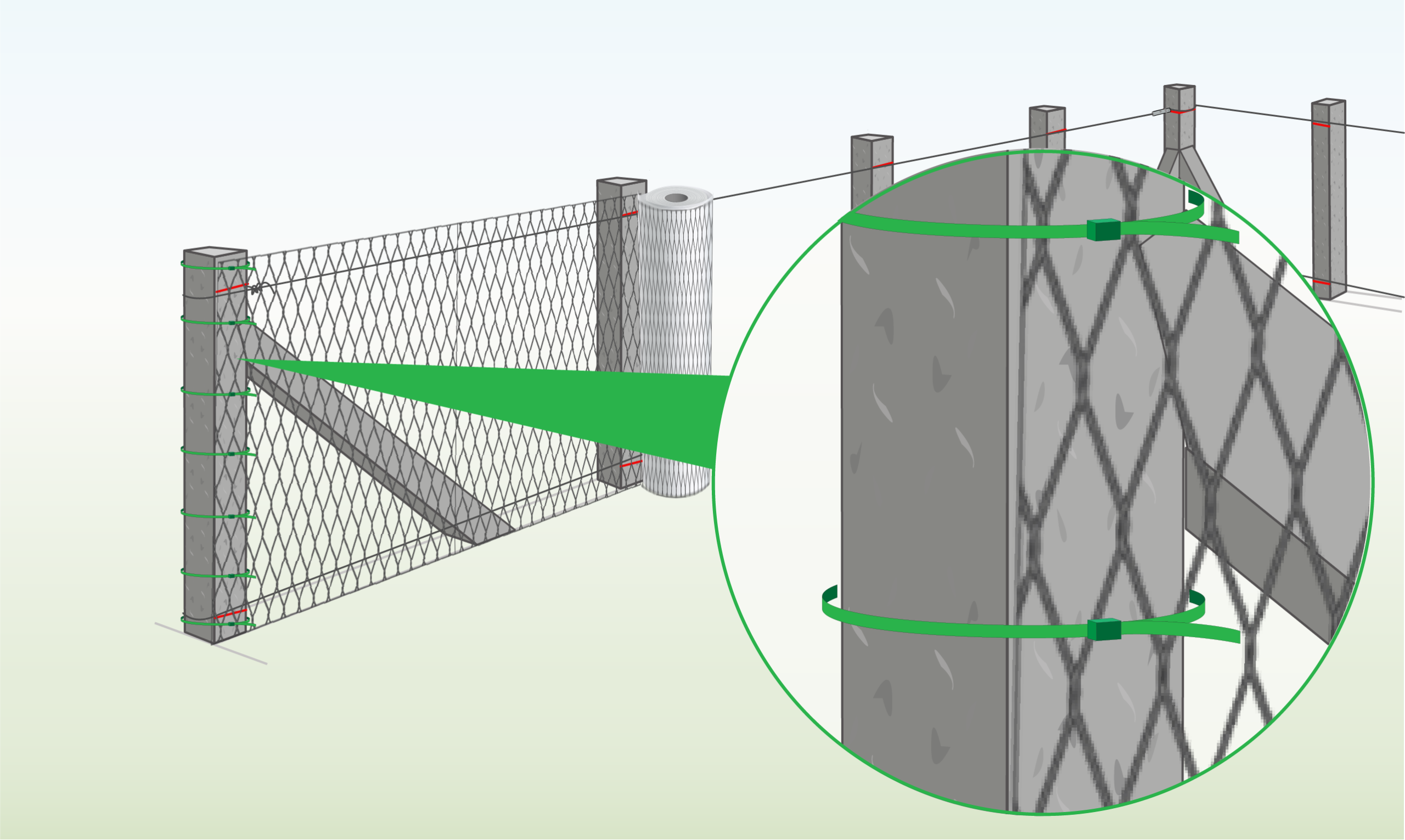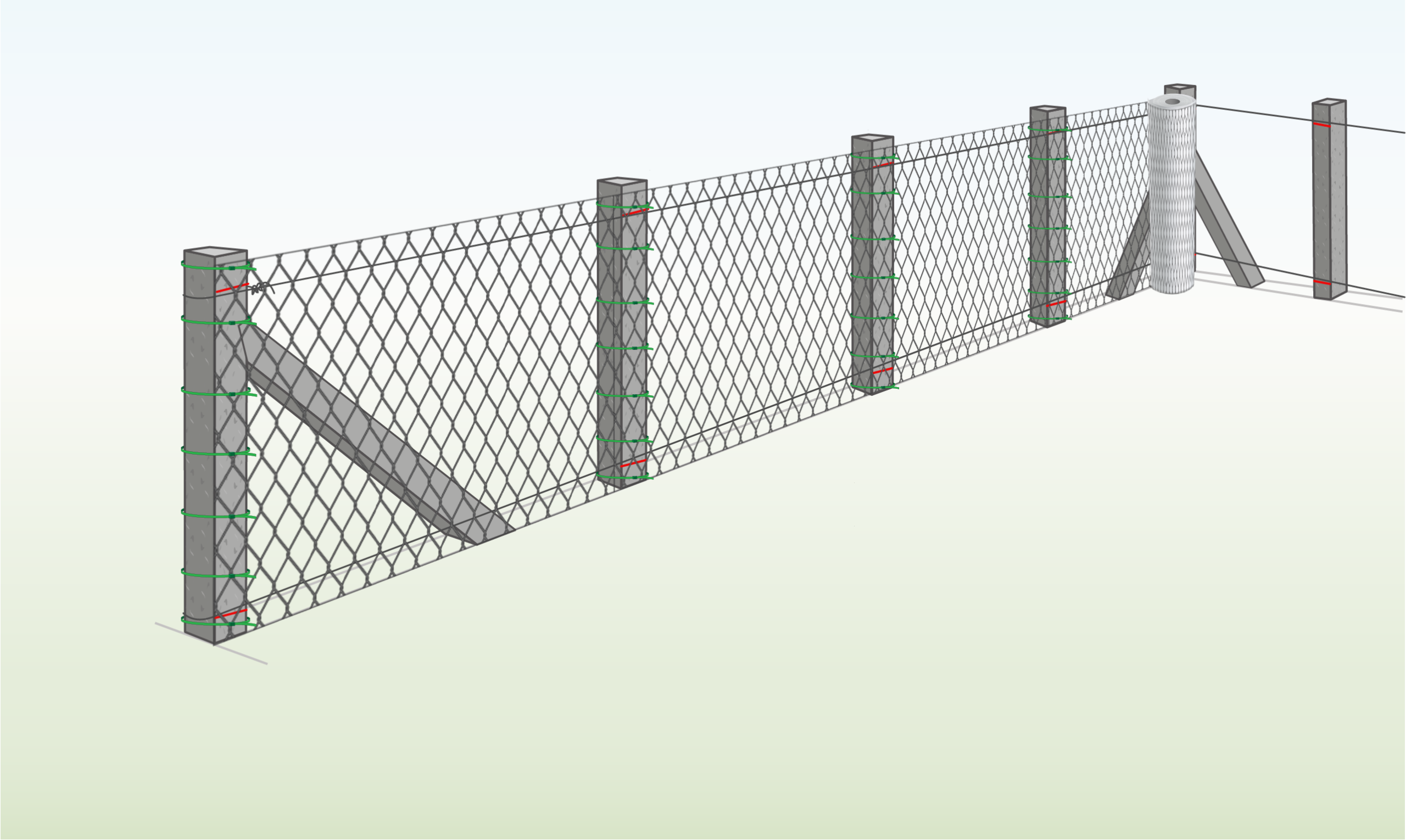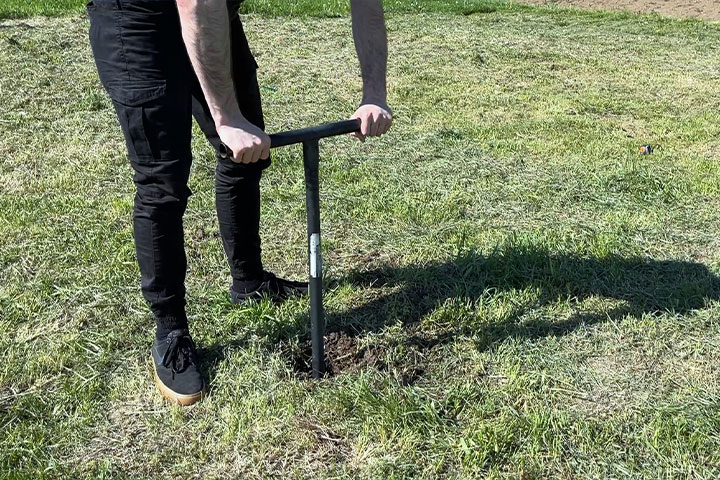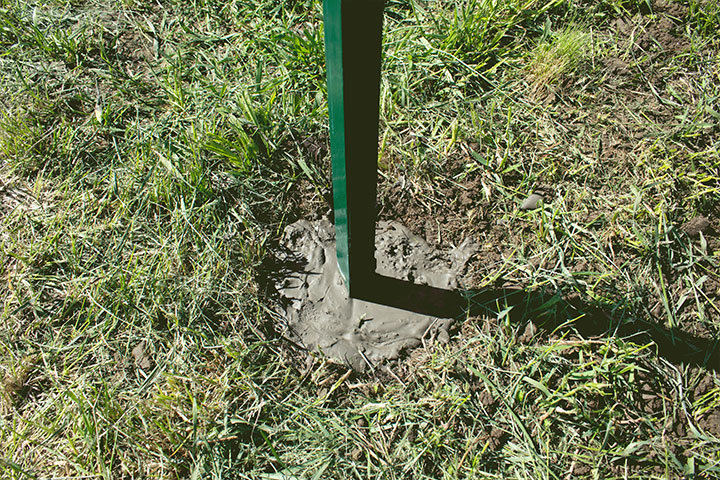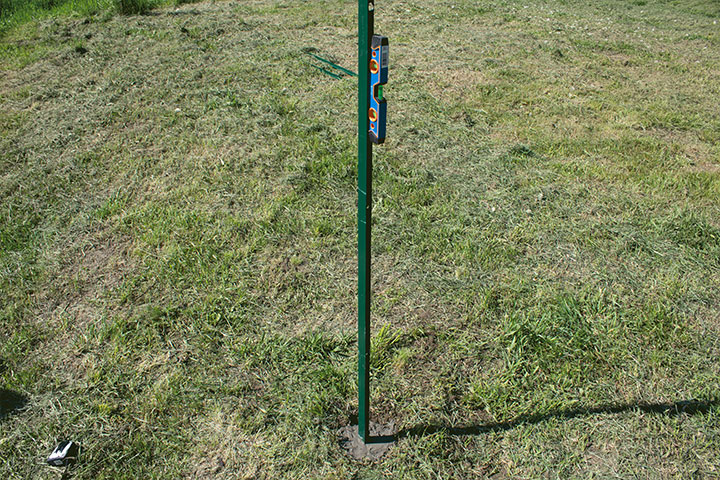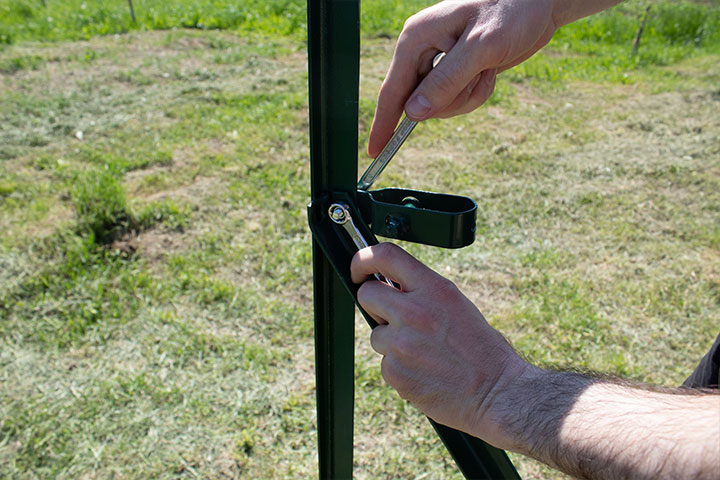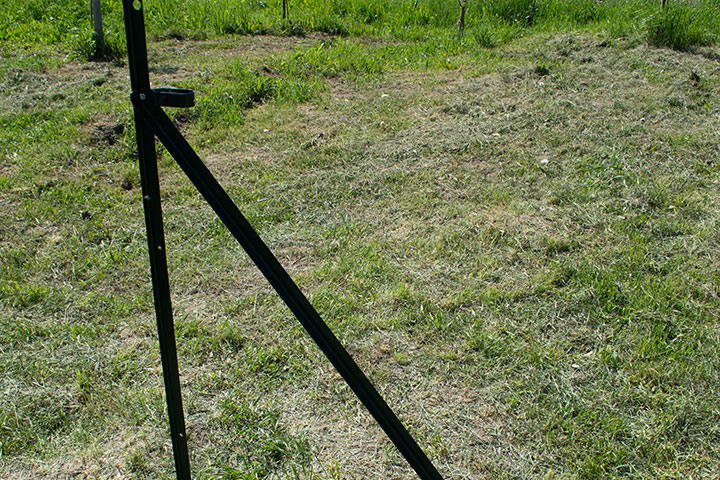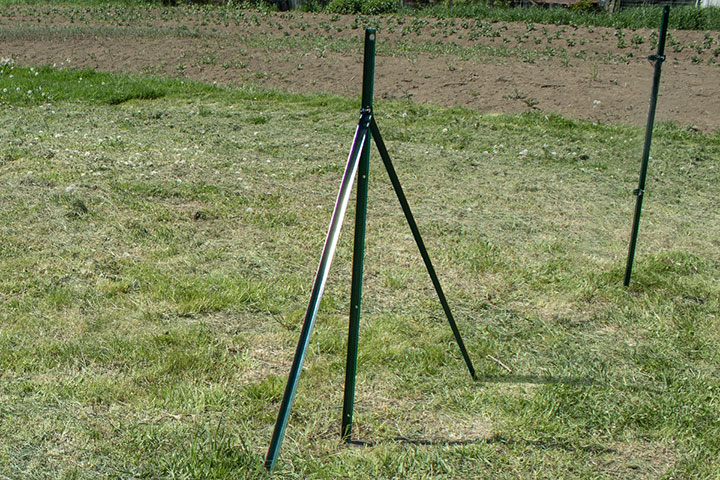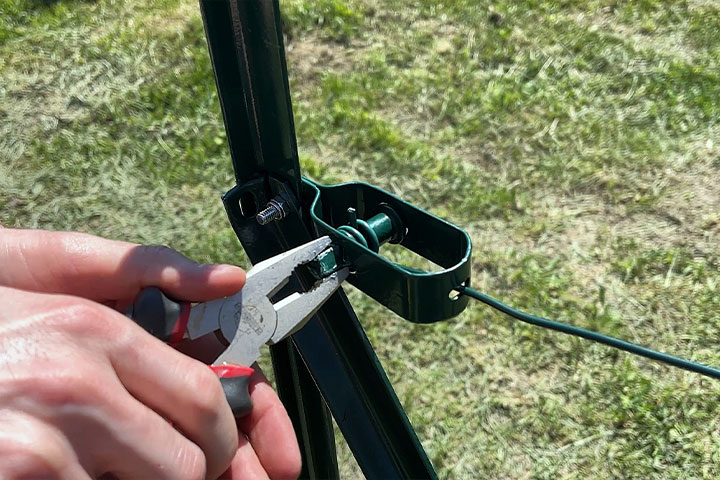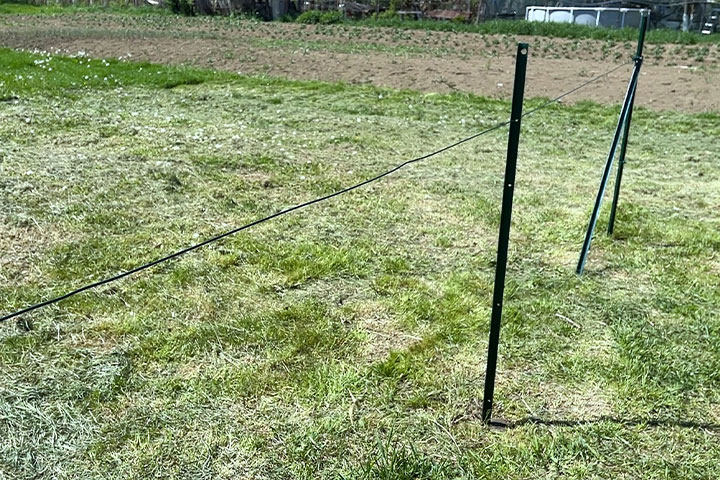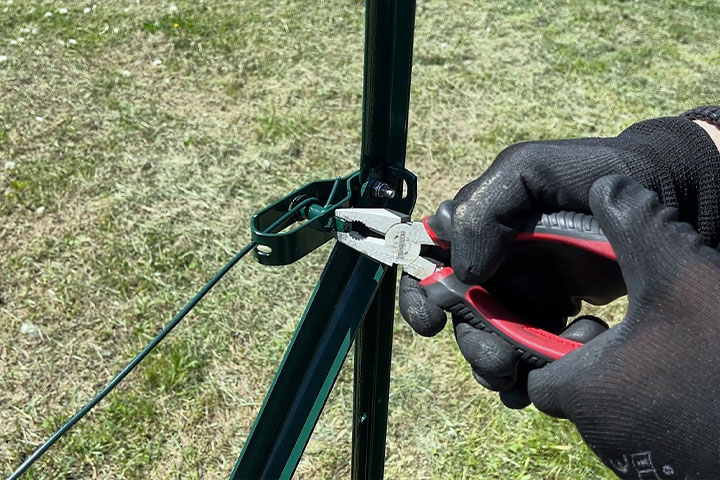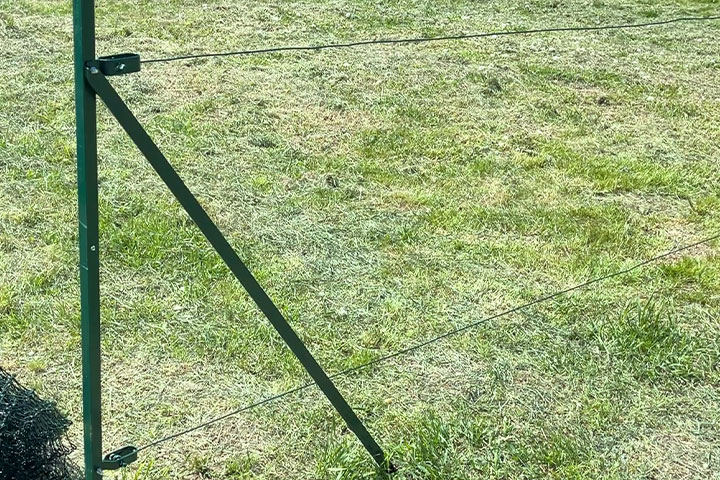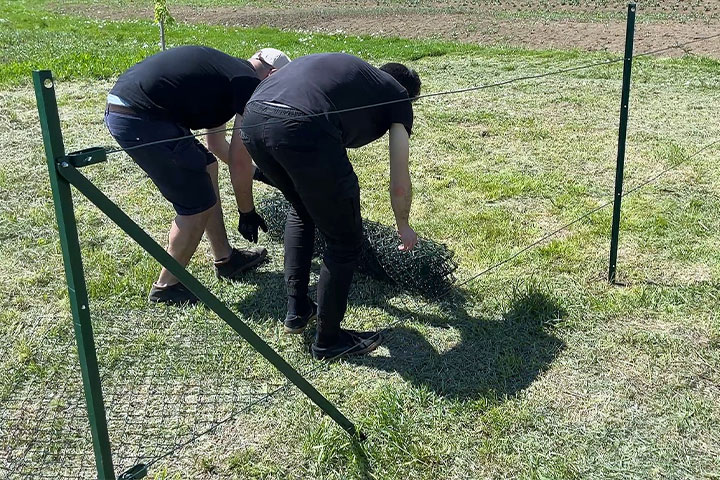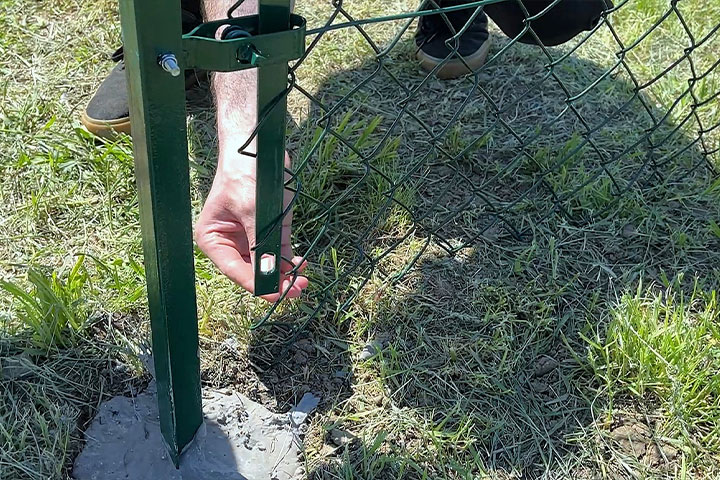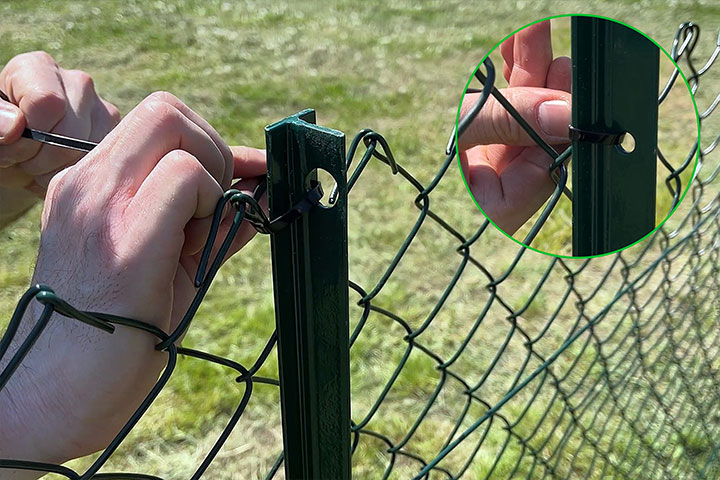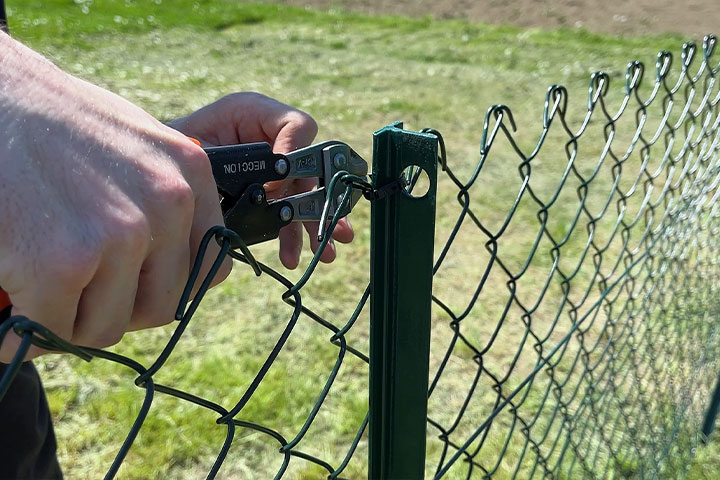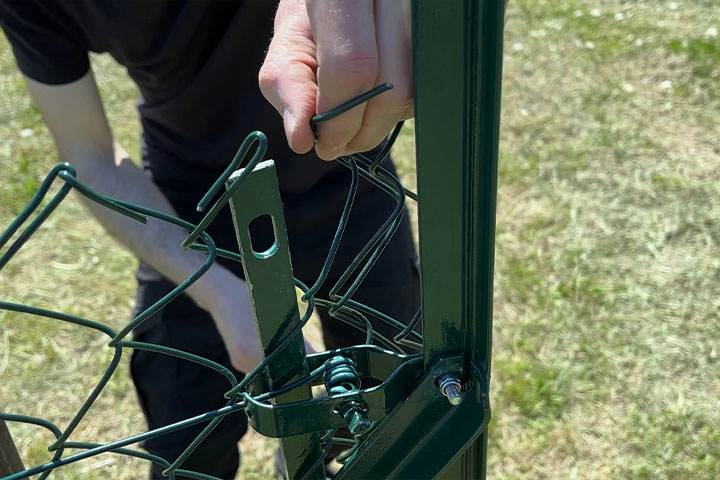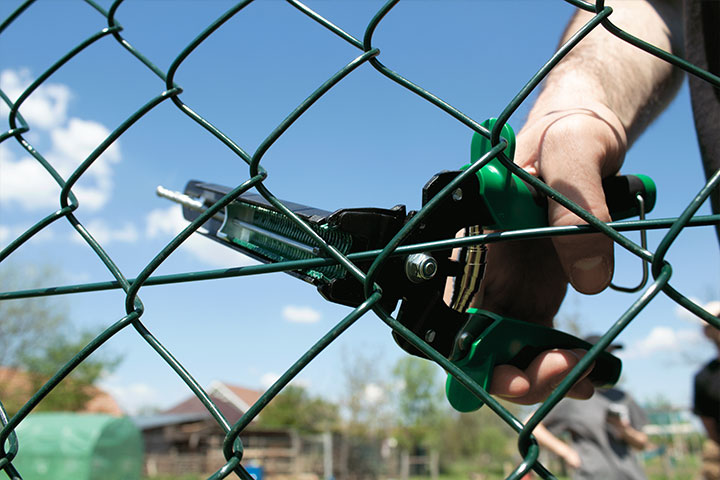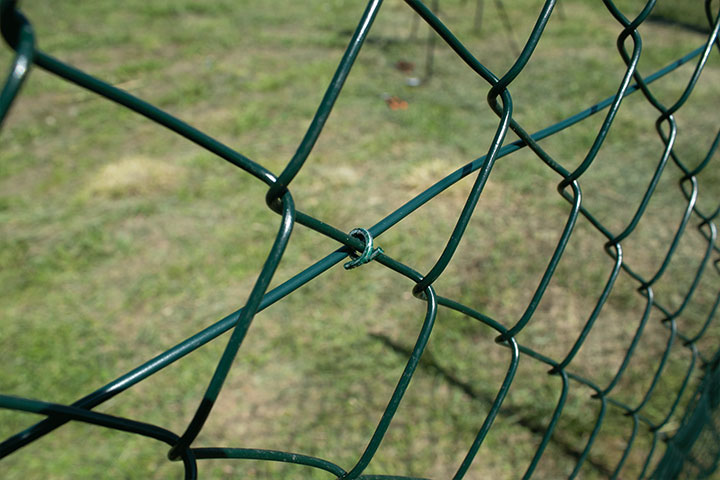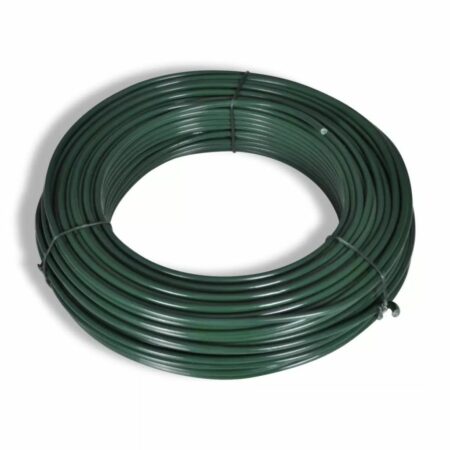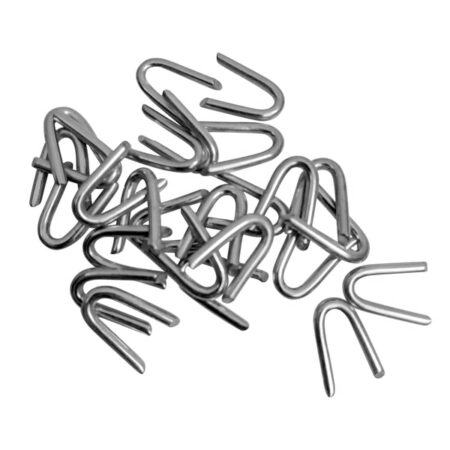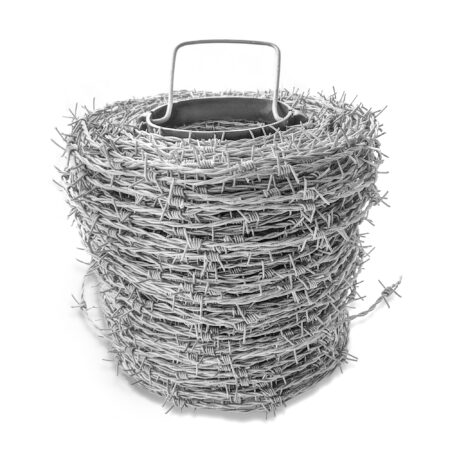Chain Link Fence
Galvanised & PVC chain link fence for commercial and residential applications including boundary/perimeter demarcation and security fencing.
Manufactured in Europe, to BSEN Standards
Key Info:
- Prices start from £45.99
- 10 year+ lifespan
- Multi purchase discounts
Related: Security Fencing, Stock Fencing, Welded Wire Mesh

Customer Images
Videos





Product Information: Chain Link
Properties – Galvanised
| Property | Description |
| Material | Hot dip galvanised with zinc coating |
| Wire Construction | Twisted together in a single wind for superior flexibility & adaptability during installation |
| Zinc Purity | 99.9% |
| Appearance | Diamond shape mesh: metallic grey /silver |
| Hole Size | 50mm x 50mm |
| Diameter | Standard: 2.5mm & Heavier: 3mm |
| Handling | Delivered as a roll, easy to cut to size |
| Biodegradable | No |
Properties – PVC Coated
| Property | Description |
| Material | Steel wire is hot dip galvanised, then immersed in primer before plastic coating is applied. |
| Wire Construction | Twisted together in a single wind for superior flexibility & adaptability during installation |
| Zinc Purity | 99.9% |
| Appearance | Diamond shape mesh, with alpine green plastic coating |
| Hole Size | 50mm x 50mm |
| Diameter | Standard: 1.7mm / 2.5mm & Heavier: 2.1mm / 3.1mm |
| Handling | Delivered as a roll, easy to cut to size |
| Biodegradable | No |
| Corrosion Resistance | 10 years (in low risk environments) |
Installation Instructions
With Concrete Posts
With T Posts
| To Do | Explanation |
| Step 1 – Plan & Measure
|
Measure & mark your post locations with spray paint or something similar. The distance between them should be 2m-2.5m.\
Measure the total length between the ends. You will now be able to order the correct length of fencing you need. |
| Step 2 – Dig Holes
|
Using a spade, dig a hole in each of the marked locations.
The holes should be three times wider than the poles. The depth of the holes should be 1/3 the length of the poles. |
| Step 3 – Position Upright Posts
|
With Concrete: For best results, fill the holes with 100mm of gravel and pat it down so that it is compact. Then add 150mm of concrete on top, put the poles into the wet concrete and allow at least 1 day for the concrete to set. Fill the rest of the hole with dirt.
Without Concrete: Place them in the middle of the holes, then fill the holes with large stones to hold the poles in place. Then add earth until tight and compact. |
| Step 4 – Check for Straightness
|
Use a spirit level to make sure your poles are straight, then secure them in place. This is important, otherwise your fence will not be straight.
Once they are all in place, allow a few days for the concrete to dry up. |
| Step 5 – Position End Posts Correctly
|
The end poles should have a slot for the angle support, which should be positioned towards the fence run. |
| Step 6 – Position Corner Posts Correctly
|
The corner poles have slots on 2 adjoining sides, which should be positioned towards the two fence runs that the corner is joining.
|
| Step 7 – Attach Angle Supports to End Posts
|
Place an angle support into the pre-made slot on the end pole.
Note: If there is no pre-made slot, as a general rule, the brace should be attached at 2/3rd of the upright’s height and at a 45 degree angle.
Place the supports at the correct position to determine where the hole needs to be dug.
Dig out the hole, place rubble on the bottom of it and place the angle support inside.
Cover the hole around the angle support and stomp it down. This can also be concreted in as an alternative. |
| Step 8 – Attach Angle Supports to Corners
|
Repeat step 7 with the two angle supports that the corner post needs. |
| Step 9 – Mark Location for Tensioning Wire
|
Chain link fencing needs to be tensioned with multiple lines of wire:
– 2 lines are enough for heights up to 1.2 metres.
Mark the position for each wire strand on all poles, making sure they’re consistent so that the wire strands will be level with the ground. |
| Step 10 – Attach Wire to First Post
|
Fasten the first wire strand to the end pole at the lowest marked position.
Hook it around the concrete, twist it backwards, and wind it around itself 4-5 times to secure the tension. |
| Step 11 – Attach Radisseurs
|
Use separate pieces of wire to secure the radisseurs to the corner and end posts.
Note: Skip to step 14 if you don’t have radisseurs. |
| Step 12 – Connect Wire to Radisseur
|
Once you reach the first radisseur, cut the first line of tensioning wire, leaving an extra 10cm of length for adjustment.
Thread the wire through the hole positioned in the centre of the radisseur. |
| Step 13 – Tension the Wire
|
Use pliers to rotate the pin on the radisseur clockwise. |
| Step 14 – Alternative with No Radisseur
|
In the absence of a radisseur, twist the wire around the pole and wind it around itself 4-5 times as an alternative.
Note: Using this method will result in less tension compared to utilising a radisseur. |
| Step 15 – Attach Wire to Intermediates
|
Fasten the wire to the intermediate poles using cable ties or tying wire. |
| Step 16 – Attach Remaining Wire
|
Secure the remaining wire strands by repeating steps 10-13. |
| Step 17 – Start Attaching Mesh
|
Roll out sufficient mesh to cover the distance between the first two uprights.
Important: Make sure to do this with the roll standing up or the roll placed on a flat & even surface with the flap facing upwards to avoid snagging!
Secure the mesh to the first pole using cable ties (or tie wire) at 15cm intervals. |
| Step 18 – Pull Tight
|
Pull the mesh tight to stretch it, then attach it to the next pole with cable ties. |
| Step 19 – Attach Remaining Mesh
|
Proceed with securing the remaining section of the mesh by following the process described in steps 17-18. |
| Step 20 – Secure to Tension Wire
|
Make sure to secure the tensioning wire to the fence at various points to maintain the tension of the fence. |
FAQs
How deep in the ground do fence posts need to be?
The posts should be 1/3 the length of the post. For example:
- 6ft post = 2ft in the ground
- 5ft post = 1.6ft in the ground
- 4ft post = 1.3ft in the ground
How much concrete do you need for a post?
For an average size post, you will need around 150mm of concrete.
Can a fox climb a chain link fence?
Yes, believe it or not, they can. Opt for a fence that is over 6ft / 1.8m high, for the best chance of keeping them at bay.

